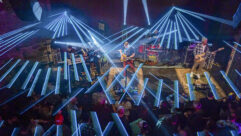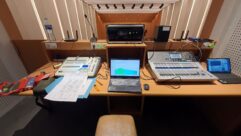The Sounds of Music
Jan 20, 1997 12:00 PM,
By the S&VC staff
“Tarump-bum-bam-boom.” Thunderous applause.The conductor takes a bow, the cast has its final curtain call, and the audience files out in an orderly fashion.
But how did they get there? Why do they keep coming back? Where did it all begin?
It began with an idea. But who had the idea and developed it into the reality of the theater?
The venue owner, architect, consultant, and sound-system installer all played an important role in putting each piece in its proper place.
Of all the types of venues sound contractors will work in, it is in the auditorium where the sound system is the most important. Concert halls, theaters and clubs all must present clear speech and beautiful music, but because the visual impression in these venues is so important, the sound is often given short shrift: money allotted to the design process is unrealistic; time allotted for design and installation is too short; and the needs of the owner, architect and acoustic consultant can be in conflict.
In this issue, we focus on the special problems of sound-system design for auditoria. You can see what can go horribly wrong and what can go terrifically right in two halls, decades, and miles, apart. The differences in process and outcome train a spotlight on the auditorium’s unique needs. Then, you’ll read about a bevy of solutions for all types of auditoria. Ultimately, you’ll discover that early planning by the sound-system consultant can alleviate or even eliminate these problems.
And then the architect is happy, the owner is happy, and the audience will reward you with a rounding array of claps and bravos.










